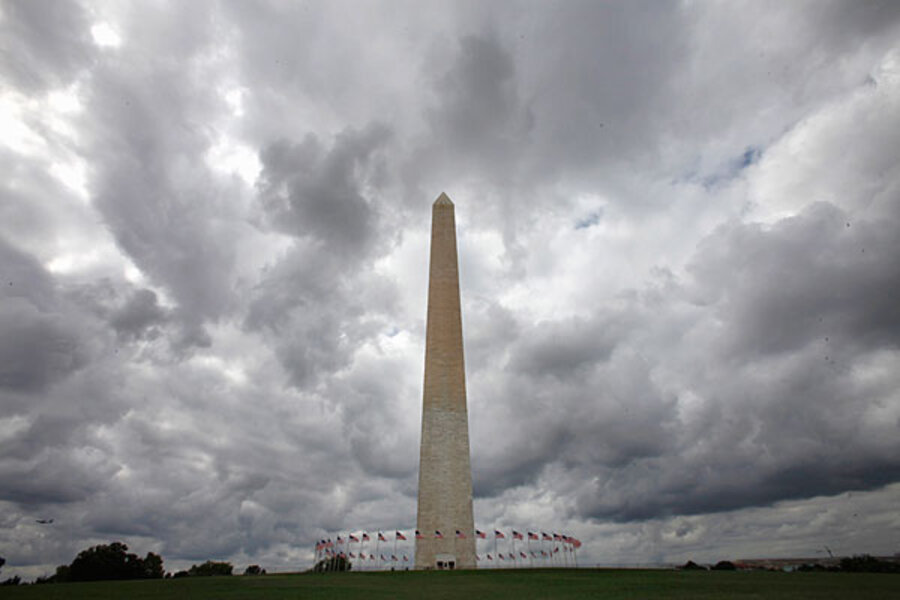Washington Monument isn't falling, but it's not reopening soon, either
Loading...
| Washington
The Washington Monument is not falling down. That’s the good news from today’s National Park Service briefing about the condition of the iconic structure in the wake of the 5.8 magnitude earthquake which struck the East Coast on August 23.
The monument is “structurally sound” and “is not going anywhere,” said Bob Vogel, superintendent of the National Mall and Memorial Parks, at an afternoon press conference.
The bad news is that the popular tourist attraction will remain closed indefinitely. The interior elevator has been damaged and only goes part-way up the structure, for one thing. Plus there are at least four cracks in the marble structure, some as high as 450 feet in the air.
Much mortar was shaken out by the temblor – though some of the building’s mortar is soft and designed to crumble to allow the building to sway.
A five-day examination of the exterior will begin Tuesday, said Mr. Vogel. The Park Service has brought in a mountaineering specialist ranger, Brandon Latham, from Denali National Park in Alaska. He’ll rappel down the monument sides for a visual inspection.
It is just as well the Park Service is being so cautious. Officials also released dramatic videos of the interior of the 500-foot level of the monument during the August earthquake. They show shattered plaster, terrified tourists, and park rangers racing to evacuate the level. One viewing and you’re not likely to want to visit the aerie until you’re sure it’s fixed. (Note: the shaking starts about halfway through on all the clips.)
Assessing mortar damage is crucial, since the Washington Monument is all masonry – there’s no interior steel structure. Made of marble, granite, and gneiss, it is the world’s tallest stone building, according to the Park Service. Upon its completion it was the tallest manmade structure in the world, period. It eventually lost that title to the Eiffel Tower in Paris.
This isn’t the first time it’s suffered damage at the hands of Mother Nature. Lightning strikes have previously blown bits of stone out of alignment on the obelisk’s tip. In an 1885 report to his superiors, Col. Thomas Lincoln Casey, the Army Corps of Engineers officer in charge of completing the monument, noted that a bolt of lightning had struck the monument in June and cracked the top, just below its aluminum cap.
This event “caused considerable concern,” wrote metallurgist George Binczewski in a (charmingly unusual) history of the Washington Monument’s aluminum summit. Extra lightning rods were bolted to the structure.
This worked, though it only channeled the fury of nature.
“During the 1934 refurbishment of the monument’s exterior, it was noted that lightning strikes had blunted the top of the aluminum apex and some globules of aluminum had fused to the sides,” wrote Binczewski.
In 1982, a nuclear arms protester named Norman Mayer crashed a van on the monument’s base. He claimed to have enough explosives inside to topple the structure, and held police at bay in a tense standoff for 10 hours. With tourists trapped inside the monument, Park Police eventually shot and killed Mayer to end the incident. His van contained no bombs.





